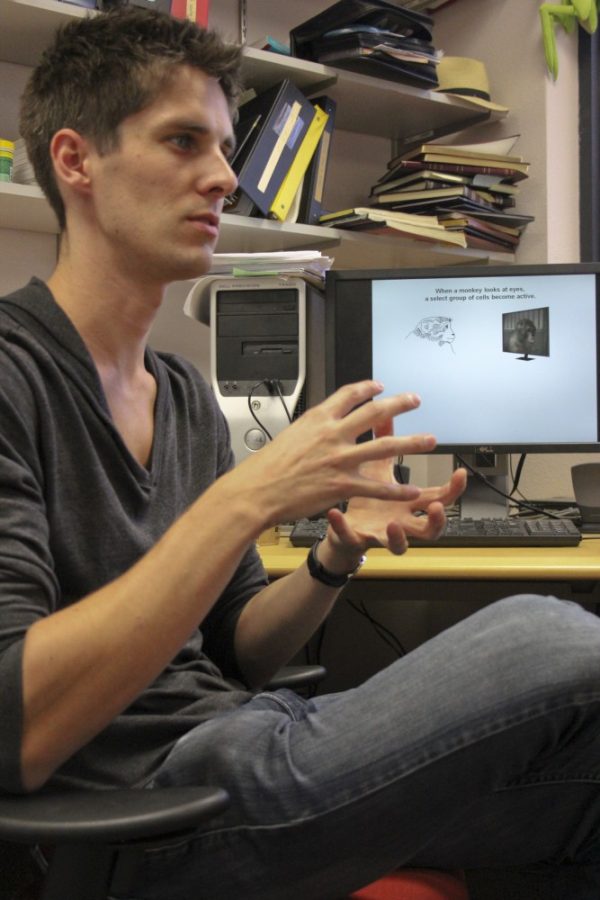The results of a UA study may be the stepping stone to furthering research regarding the interworkings of human social interaction.
Researchers have discovered new cells in the amygdala, a part of the brain that plays a key role in processing emotions and social behavior, and which is associated with allowing one to feel a special connection with another when eye contact is made. The study was overseen by Katalin Gothard, a physiology professor at the UA.
This type of cell was discovered in a Rhesus monkey when Gothard and a team of researchers placed electrodes in the amygdala and recorded the neuron activity as the monkeys watched videos of other monkeys making various expressions, said Clayton Mosher, a fourth-year graduate student in the neuroscience department.
During the study, the monkey would watch 22 videos a day, viewing them multiple times. Each video was 10 seconds long and consisted of one individual monkey displaying three different facial expressions, including a neutral neutral expression, a threat and a lip smack, which is considered a friendly gesture, said Prisca Zimmerman, a senior research specialist.
Some of the movies showed the monkey looking away from the camera, while the remaining videos depicted the monkey looking toward the camera, Zimmerman added. Researchers could observe whether eye contact was made by red dots that were transmitted onto the video screen and corresponded to where the monkey was looking via equipment that was connected to the monkey as it watched.
“We see that when monkeys watch the movie, they treat them a little like they are realistic,” Mosher said. He added that when eye contact is made, it either makes the monkey watching the screen nervous, causing him to look away, or provokes a reaction indicative of a social response.
Regardless of the expressions, Mosher said the monkeys spent most of the time looking at the eyes, but when they made eye contact, they made an expression. This is what has sparked an interest in the study.
“We are interested in knowing how the brain makes social behavior happen,” Mosher said.
Mosher said that the next step in the research will be to use two monkeys to make eye contact in person.









